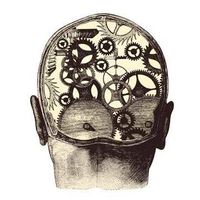The Intersection of Mathematics and Artificial Intelligence: A New Era of Discovery
October 10, 2024, 10:40 pm

Location: United States, California, San Francisco
Employees: 201-500
Founded date: 2015
Total raised: $18.17B
In the world of mathematics, a revolution is brewing. It’s not just about numbers and equations anymore. The advent of artificial intelligence (AI) is reshaping the landscape, offering new tools and perspectives. Terence Tao, a luminary in the field, is at the forefront of this transformation. He sees AI not as a rival but as a partner in the quest for knowledge.
Tao, a professor at the University of California, is often hailed as one of the greatest mathematicians alive. His accolades include the Fields Medal, the highest honor in mathematics. Yet, despite his towering intellect, he acknowledges the limitations of current AI technologies. Tools like ChatGPT, while impressive, are not yet equipped to tackle the complexities of mathematical reasoning. They are more akin to parrots, mimicking language without true understanding.
Recent developments, however, hint at a shift. OpenAI’s new series of models, dubbed o1, claim to reason and solve problems more like humans. This could be a game-changer. If successful, these models might assist mathematicians in ways previously thought impossible. Imagine a world where researchers collaborate with AI to explore uncharted territories of mathematics.
Tao describes this emerging partnership as a form of “industrial-scale mathematics.” In this new paradigm, AI will not replace human creativity but will enhance it. Think of it as a symbiotic relationship. Humans bring intuition and insight; AI offers computational power and efficiency. Together, they can tackle problems that have long eluded mathematicians.
The current landscape of AI in mathematics is still in its infancy. Early versions of AI, including ChatGPT, struggled with complex mathematical tasks. They could generate coherent text but often faltered when faced with rigorous logic. Tao recalls his initial experiments with these models, noting their inability to grasp deeper mathematical concepts. They were like students who could recite facts but lacked the ability to apply them meaningfully.
However, as AI evolves, so does its potential. Tao envisions a future where researchers can interact with AI as they would with a colleague. Picture a mathematician brainstorming ideas, while an AI assistant helps refine and execute those concepts. This collaborative approach could streamline the research process, allowing for rapid exploration of new ideas.
One of the most exciting prospects is the ability of AI to facilitate large-scale collaboration. Traditionally, mathematical research has been a solitary endeavor. A single mathematician might spend years solving a problem, often in isolation. With AI, this could change. Researchers could work together on massive projects, breaking down complex proofs into manageable parts. AI could ensure that each piece fits together seamlessly, much like a well-oiled machine.
Yet, there are challenges. Current AI models lack the ability to learn and adapt in the same way humans do. When a student makes a mistake, they learn from it. AI, on the other hand, often resets with each new session. This static nature limits its effectiveness as a research partner. Tao emphasizes the need for AI to evolve beyond its current capabilities, to become a true collaborator rather than a mere tool.
Despite these hurdles, the potential for AI in mathematics is vast. Tao is particularly interested in exploring areas of mathematics that have yet to be fully understood. He likens this to a factory producing thousands of toys simultaneously, rather than a craftsman painstakingly creating one at a time. With AI, mathematicians can tackle broad, crowd-sourced problems, generating insights that were previously unimaginable.
This shift mirrors developments in other scientific fields. For instance, in genetics, researchers once focused on individual organisms. Now, they analyze entire populations, thanks to advanced computational tools. Similarly, AI could enable mathematicians to broaden their scope, tackling a multitude of equations and relationships at once.
The implications extend beyond mathematics. As AI continues to advance, it will likely impact various scientific disciplines. Michael Levitt, a Nobel laureate in chemistry, highlights the transformative role of AI in computational biology. His work with AI systems like AlphaFold has revolutionized how scientists predict protein structures. This kind of innovation showcases the potential for AI to unlock new frontiers in research.
As we stand on the brink of this new era, the message is clear: collaboration is key. The future of mathematics—and indeed, all science—lies in the partnership between human intellect and artificial intelligence. Together, they can explore the vast, uncharted territories of knowledge, pushing the boundaries of what we understand about the universe.
In conclusion, the intersection of mathematics and AI is not just a trend; it’s a paradigm shift. As we embrace this new reality, we must remain open to the possibilities it presents. The journey ahead is filled with promise, and with each step, we inch closer to unlocking the secrets of the cosmos. The partnership between humans and machines is just beginning, and the potential for discovery is limitless.
Tao, a professor at the University of California, is often hailed as one of the greatest mathematicians alive. His accolades include the Fields Medal, the highest honor in mathematics. Yet, despite his towering intellect, he acknowledges the limitations of current AI technologies. Tools like ChatGPT, while impressive, are not yet equipped to tackle the complexities of mathematical reasoning. They are more akin to parrots, mimicking language without true understanding.
Recent developments, however, hint at a shift. OpenAI’s new series of models, dubbed o1, claim to reason and solve problems more like humans. This could be a game-changer. If successful, these models might assist mathematicians in ways previously thought impossible. Imagine a world where researchers collaborate with AI to explore uncharted territories of mathematics.
Tao describes this emerging partnership as a form of “industrial-scale mathematics.” In this new paradigm, AI will not replace human creativity but will enhance it. Think of it as a symbiotic relationship. Humans bring intuition and insight; AI offers computational power and efficiency. Together, they can tackle problems that have long eluded mathematicians.
The current landscape of AI in mathematics is still in its infancy. Early versions of AI, including ChatGPT, struggled with complex mathematical tasks. They could generate coherent text but often faltered when faced with rigorous logic. Tao recalls his initial experiments with these models, noting their inability to grasp deeper mathematical concepts. They were like students who could recite facts but lacked the ability to apply them meaningfully.
However, as AI evolves, so does its potential. Tao envisions a future where researchers can interact with AI as they would with a colleague. Picture a mathematician brainstorming ideas, while an AI assistant helps refine and execute those concepts. This collaborative approach could streamline the research process, allowing for rapid exploration of new ideas.
One of the most exciting prospects is the ability of AI to facilitate large-scale collaboration. Traditionally, mathematical research has been a solitary endeavor. A single mathematician might spend years solving a problem, often in isolation. With AI, this could change. Researchers could work together on massive projects, breaking down complex proofs into manageable parts. AI could ensure that each piece fits together seamlessly, much like a well-oiled machine.
Yet, there are challenges. Current AI models lack the ability to learn and adapt in the same way humans do. When a student makes a mistake, they learn from it. AI, on the other hand, often resets with each new session. This static nature limits its effectiveness as a research partner. Tao emphasizes the need for AI to evolve beyond its current capabilities, to become a true collaborator rather than a mere tool.
Despite these hurdles, the potential for AI in mathematics is vast. Tao is particularly interested in exploring areas of mathematics that have yet to be fully understood. He likens this to a factory producing thousands of toys simultaneously, rather than a craftsman painstakingly creating one at a time. With AI, mathematicians can tackle broad, crowd-sourced problems, generating insights that were previously unimaginable.
This shift mirrors developments in other scientific fields. For instance, in genetics, researchers once focused on individual organisms. Now, they analyze entire populations, thanks to advanced computational tools. Similarly, AI could enable mathematicians to broaden their scope, tackling a multitude of equations and relationships at once.
The implications extend beyond mathematics. As AI continues to advance, it will likely impact various scientific disciplines. Michael Levitt, a Nobel laureate in chemistry, highlights the transformative role of AI in computational biology. His work with AI systems like AlphaFold has revolutionized how scientists predict protein structures. This kind of innovation showcases the potential for AI to unlock new frontiers in research.
As we stand on the brink of this new era, the message is clear: collaboration is key. The future of mathematics—and indeed, all science—lies in the partnership between human intellect and artificial intelligence. Together, they can explore the vast, uncharted territories of knowledge, pushing the boundaries of what we understand about the universe.
In conclusion, the intersection of mathematics and AI is not just a trend; it’s a paradigm shift. As we embrace this new reality, we must remain open to the possibilities it presents. The journey ahead is filled with promise, and with each step, we inch closer to unlocking the secrets of the cosmos. The partnership between humans and machines is just beginning, and the potential for discovery is limitless.
